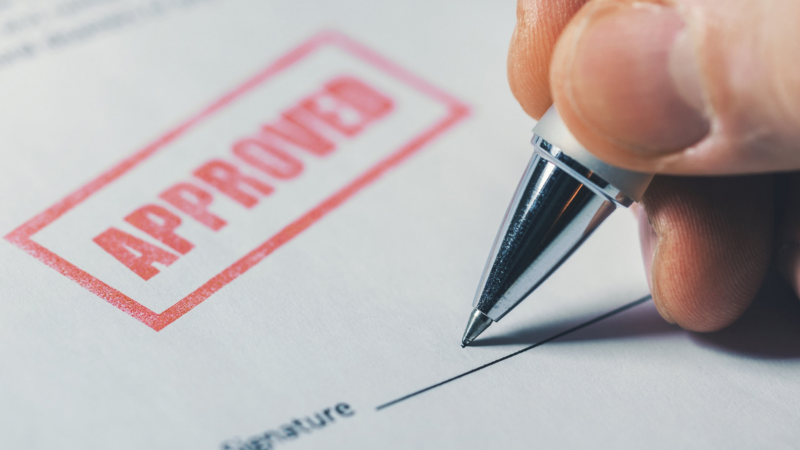It might be a contract for a transaction from a potential vendor or customer. It might be an application for an account. Whether it’s a hard-copy document or a digitized one, your company needs to verify the other party quickly and easily. Most likely, you’re reviewing and signing off on a wide variety of these documents. Probably just as likely, you have to do so quickly.
But what if the person identified in the document as the customer or vendor isn’t really who he or she says they are?
If your role for your company is as general counsel or as an executive in its corporate risk department, you’re well aware that fraudulent documentation can be extremely costly.
You also know that reliance on digitized communication has ignited a global explosion in corporate fraud. There’s plenty of data to corroborate that – cybersecurity sources estimate that $6 trillion was lost worldwide due to cybercrime in 2022. That’s why the federal government has developed — and continues to develop — identity verification protocols that businesses and other organizations need to comply with. In addition, several states have passed their own cybersecurity laws.
Even if your business doesn’t work with a huge abundance of individuals or business to be validated, you still need to be sure that the other party you’re potentially going to be doing business with is legitimate. To help your organization combat fraud and comply with government regulations, you’ve probably been investigating best-in-class identity verification solutions that can protect your business from all kinds of document-originated fraud.
There are several capabilities you’re likely to be seeking. Verifying your third-party relationships – regardless of your company’s size — can save time, money, and the headaches caused by having to repair the damage after the fact. So, what should you be looking for?
The newest type of fraud
One thing to keep in mind is that fraudsters are always scheming ways to outwit protective measures. So first, let’s look at the fastest-growing type of fraud – what cybersecurity experts are calling synthetic identity.
Synthetic identity fraud is somewhat different from what might be termed “traditional” identity fraud. With traditional fraud, the perpetrator pretends to be another person in order to access that person’s credit cards and other financial accounts.
With synthetic identity fraud, the fraudster assumes the name of a real or imaginary person, assembles other identity data (which typically includes another person’s Social Security number), and then applies for credit under that created identity. It’s a more complex approach to identity fraud and thus harder to catch. The Federal Reserve has estimated that 85% to 95% of synthetic identity fraud goes undetected.
With fake vendors and customers using increasingly sophisticated techniques, a company needs a full panoply of digital tools. That best-in-class identity verification toolbox probably should include identity document validation, liveness verification, and electronic data verification.
You need to be able to counter all the ways an identity fraud perpetrator might fool you.
A well-stocked toolbox
That best-in-class toolbox should be able to provide these capabilities:
+ Access to up-to-date data. You’re undoubtedly thinking that this goes without saying. But you need a solution to prove that it really can dig up the most current identity information.
+ Transparency. Data may be “current,” but it’s not necessarily reliable. An identity verification toolbox should be able to identify unreliable sources of information – and then be able to sidestep them. Those potentially unreliable sources, by the way, can include search engines. The sources they return aren’t always accurate, even those that appear at or near the top of a search result. A verification solution also should tell you the data sources so that you can ascertain the reliability of those sources.
+ Speed as well as reliability. The days of long, arduous identity verification processes – phone calls, checking records manually, and on and on – are over. Time is short, and a well-crafted identity verification solution should allow your company to be fast as well as accurate when conducting new customer and vendor onboarding.
+ Scalability. As your company grows, your identity verification solution should be able to grow with it, without any loss of speed or accuracy. What’s more, that solution should be able to demonstrate nimbleness as fraud threats change and evolve – because they will.
Know your enemy – and what protection you require
An example of a complete identity verification toolbox has been created via the partnership of Thomson Reuters and AU10TIX. Thomson Reuters’ CLEAR ID Confirm can reveal whether potential customers or vendors appear to be a synthetic identity, have multiple aliases, and associated addresses. AU10TIX’s identity management solutions add an extra layer of protection, providing identity verification across public records and documentary and digital identities to confirm that person on the other side of the computer is who they say they are.
As you continue to research strategies and solutions for battling identity fraud, you can learn more about how digital tools can aid in the fight here.
____________________________________________________________________________________
Thomson Reuters is not a consumer reporting agency and none of its services or the data contained therein constitute a ‘consumer report’ as such term is defined in the Federal Fair Credit Reporting Act (FCRA), 15 U.S.C. sec. 1681 et seq. The data provided to you may not be used as a factor in consumer debt collection decisioning, establishing a consumer’s eligibility for credit, insurance, employment, government benefits, or housing, or for any other purpose authorized under the FCRA. By accessing one of our services, you agree not to use the service or data for any purpose authorized under the FCRA or in relation to taking an adverse action relating to a consumer application.









